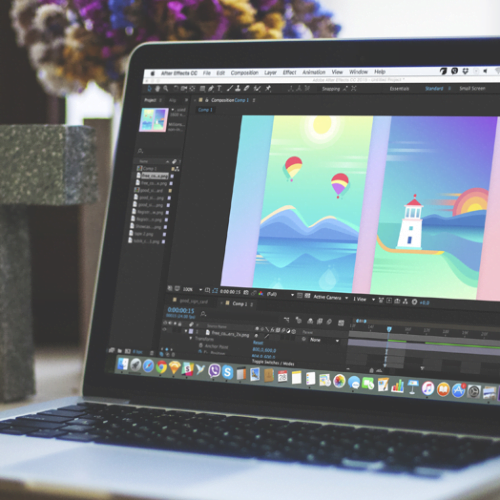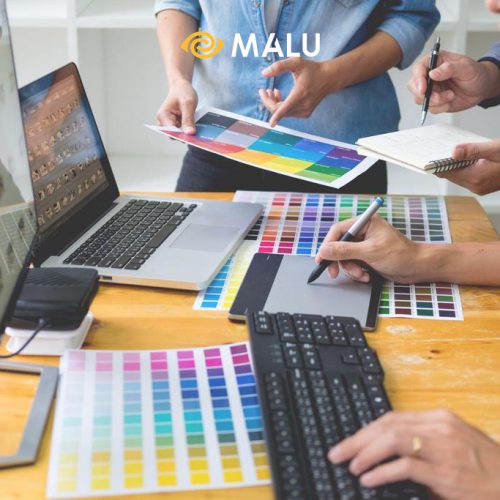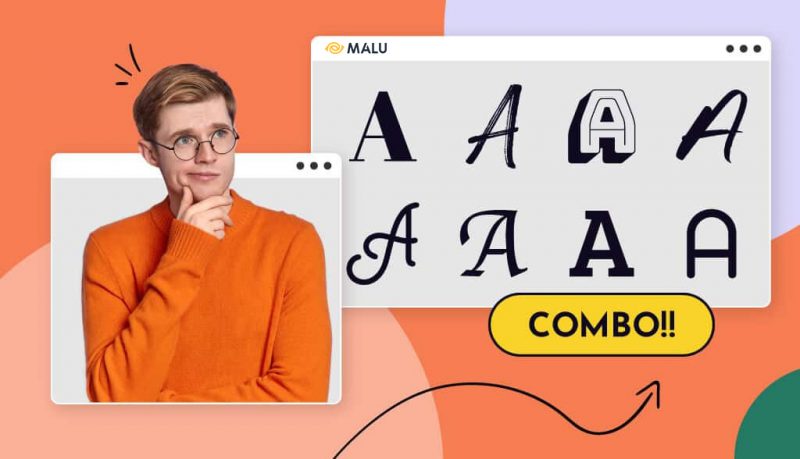
What do you remember about a brand name?
Logo design, ah… everything – mostly fonts.
We’ve posted a guide before that outlines the importance of choosing the right font for your logo design and branding, but making these decisions often isn’t easy.
There can be a lot of fonts to research, especially if you need to find a font pair for your logo and tagline. When choosing multiple fonts to represent your business, you want to be confident that the pairing is cohesive!
We’ve come up with 11 cool font combinations anyone can try, depending on your industry and the message you want to send with your logo. As you work through these designs, make sure that the fonts you choose complement each other – and that they can be used multiple times in your brand.
Let’s see!
Mục lục bài viết
Toggle1. Bungee Shade and Jost
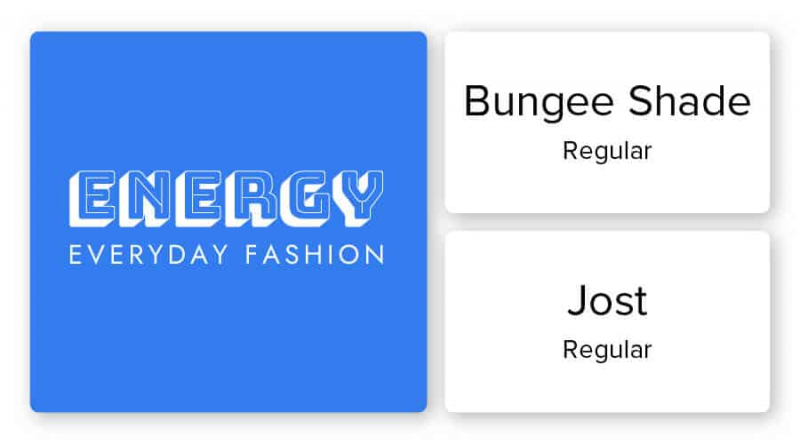
The first thing to know when choosing a font is that the two fonts must be balanced. Bungee Shade is a Google font that’s bold, confident, and full of personality, so it stands to reason that the body font – Jost – is cleaner and simpler. This font combination is great for streetwear logos, food brands that want to show they’re full of flavor, or other brands that want an energetic feel.
2. Futura and Avenir Next
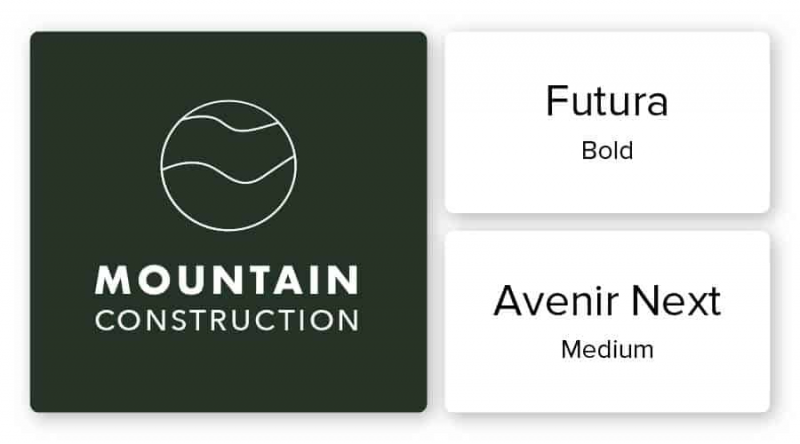
Future and Avenir Next are 2 classic sans-serifs (fonts without small feet at the edges of the strokes) that share the same mood, but are different enough for a visual contrast.
By using Futura Bold for the first part of the logo name and Medium weight Avenir Next for the second half, this construction logo naturally draws the eye down to the design. It also helps reinforce the “Mountain” part of the logo name, highlighting that the brand is strong and trustworthy.
3. Russo One and Proxima Nova
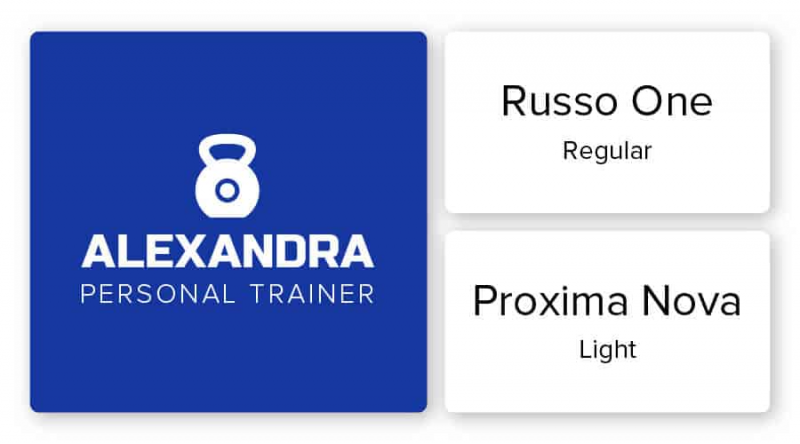
You’ll find Proxima Nova a lot on this list, because it’s such a beautiful tagline font! It is known for its great looks on digital screens which is why any brand with an online presence can consider it.
This font combination can work well for fitness logos like the one above, in addition to brands in the media or writing-intensive industries (think blogs or law). Russo One is stylish yet casual, paving the way for brands that want to be seen as friendly, approachable and cool.
4. Rockwell and Proxima Nova

Another great way to combine typefaces is to pair a serif font with a sans serif. This will help you create balance in your logo design while also having enough contrast to distinguish between different parts of the logo.
In this real estate logo , the Rockwell serif gives the ‘HO’ monogram a subtle, sophisticated touch, while the Proxima Nova (told you we’re bringing it back!) balances it with a look. clean and reliable.
5. Impact + Josefin Sans

Another thing to keep in mind when combining fonts is how they interact with additional elements of your logo, such as your shapes or symbols. Again, we have 2 sans serif fonts and their clean lines provide the perfect background font for the mustache – helping to emphasize it.
All these elements come together to create the image of a fun, stylish and confident bartender, who is sure to give the audience a good time.
6. Yanone Kaffeesatz và Open Sans
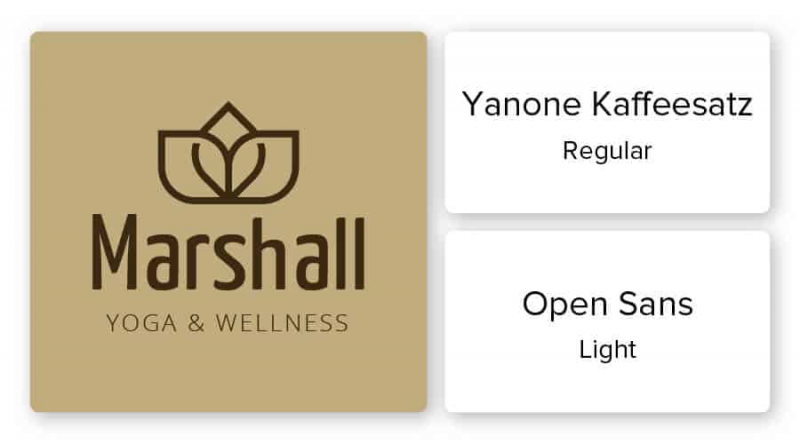
Yanone Kaffeesatz – a modern sans-serif font – is often used to represent coffee shops and food brands, but you can see that the regular version also has a working base for the healthcare industry. Strong.
The elongated lettering can symbolize growth, while the light, stencil-like Open Sans visually balances the design and gives it a subtle twist. And, again, the main typeface has the same mood as the logo, bringing the logo together in a cohesive way.
7. MuseoModerno and Proxima Nova
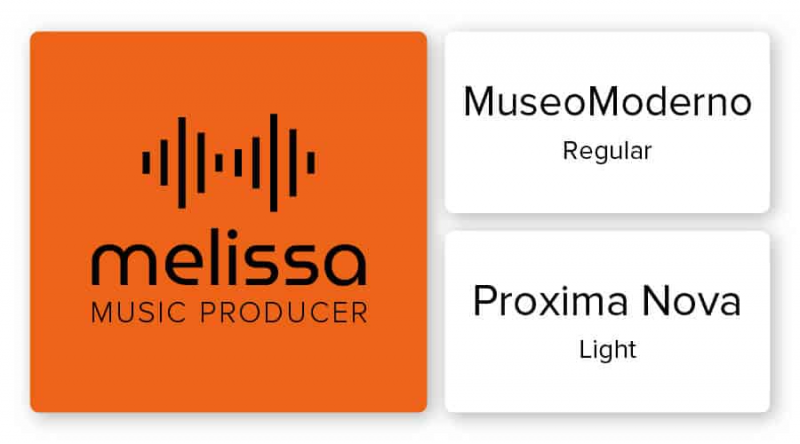
One of the most modern looking logos we’ve seen to date, the design is clean and crisp – thanks to the font combination.
Note that here, the contrast between MuseoModerno and Proxima Nova stems from lowercase versus uppercase, in addition to the weight of each stroke. Combined with abstract vertical lines, the font pair helps to convey a strong, pulsating feeling, while remaining relevant to current design trends and still easily digestible.
8. Copperplate and Josefin Sans
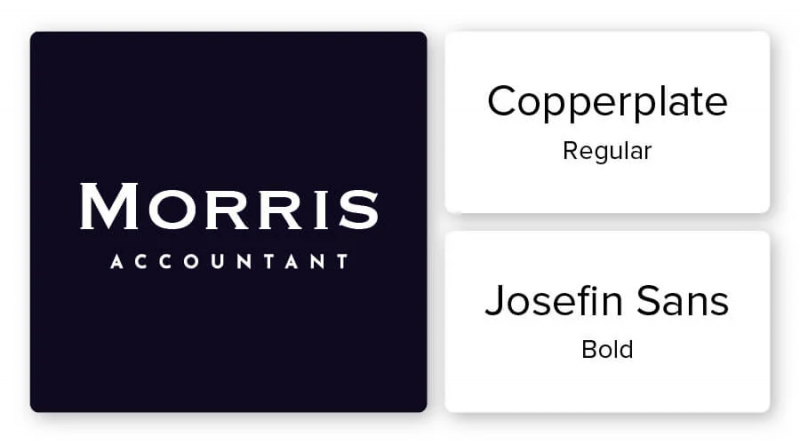
Another great serif and sans-serif pair, Copperplate and Josefin Sans (Bold) are a great match for personal brands that want to be formal, powerful, and timeless.
9. Dancing Script and Proxima Nova
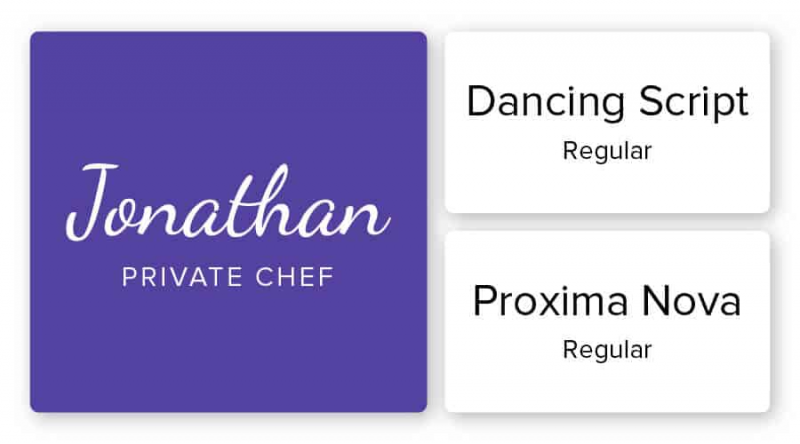
A little different from the other designs we’ve seen so far, this chef uses Dancing Script to bring out the personalization element of his brand. Many script fonts look like a handwriting, giving the logo a much more personal feel and letting the audience know the level of service to expect when they hire him.
And, again, the Proxima Nova in the intro makes the logo feel professional and clean, giving viewers peace of mind in the process.
10. Buffalo and Jost

For those who want a personal signature feel to their logo – like a trainer, stylist or consultant – Buffalo can be a great main font for your design.
Like we’ve seen, scripts are a great way to give your logo an overall personal touch. However, you can use font scripts to generate many different types of messages; for example, in contrast to the previous font scripts we have seen, Buffalo has a much more “cute” and approachable feel. In this logo, it’s even reminiscent of wardrobe hangers, accentuated by Jost subtly holding it together in the tagline.
11. Big Shoulders and Josefin Sans
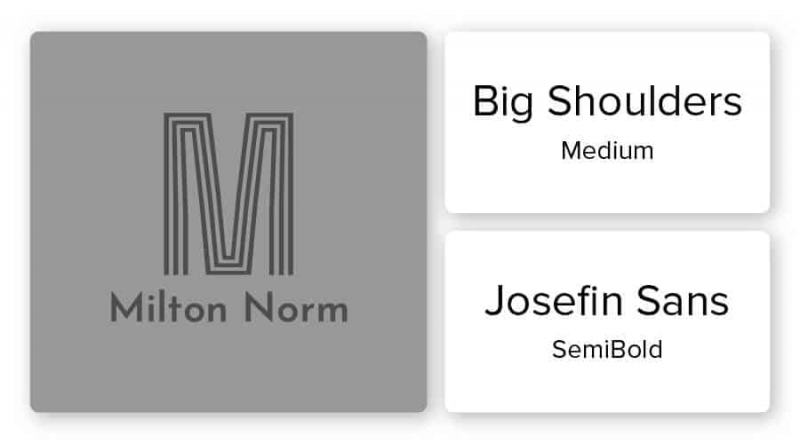
This is a font combination that won’t work for every brand but is definitely something to consider if you have a monogram. That’s because Big Shoulders can be too much if used for a long logo name, but used sparingly, it can create a really great effect.
In fact, the letter ‘M’ is almost like a symbol; This combination is a great way to draw visual attention to a specific letter in your logo, making it look designed and professional while maintaining the same feel as the main monogram. awake.
Brands in the self-help space might want to consider this font combination; note that the ‘M’ contains peaks and valleys, both of which are elevated – supported – by the Josefin Sans slogan.
12. Rockwell and Source Sans
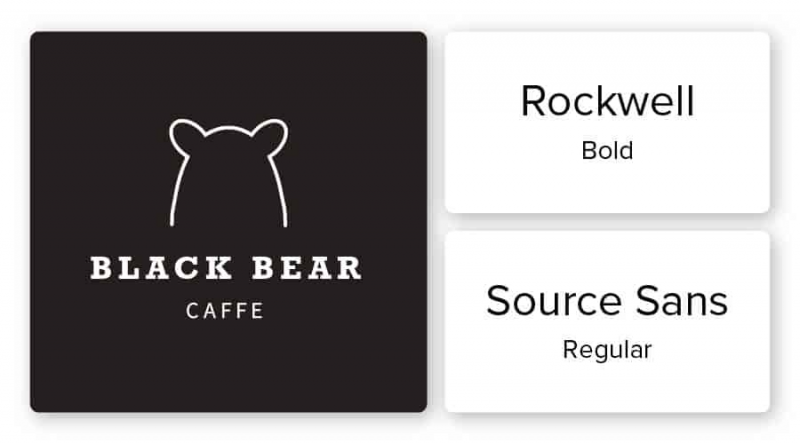
Sometimes the meanings of fonts change based solely on the elements around them.
For example, slab serifs – like Rockwell – are often considered strong and powerful, but balanced with this abstract bear (cute!) and subtle Source Sans in the tagline, the font turns cozy. and simpler.
So while slab serifs are commonly used by accountants, auto companies, and other brands that want to appear dominant, you can get creative with them to both visually stand out and balance. .
13. Amithen and Roboto Condensed
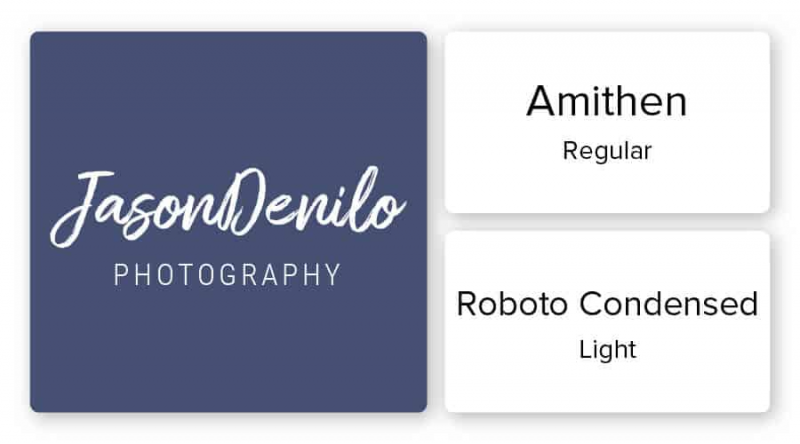
Another logo that resembles a personal signature, this font combination captures the attention of the business name – Jason Denilo – in a way not to be missed.
For photography logos, this can be a great strategy; you are the brand yourself, so it makes sense for your name to be the highlight. Amithen itself looks vivacious and creative – a unique logo signature for a single service provider!
Of course, Roboto Condensed is very neat and simple, to add an element of professionalism and balance the crazy energy of the header.
14. Library3am and Proxima Nova

This logo is technically similar to the monogram we’ve seen before (using a highly stylized title font). Here, however, Library3am creates a sense of movement, so viewers can imagine themselves in action as they come into contact with this fitness brand.
Again, you don’t need a logo to tell the story of what you do; Sometimes an effective font pair will do the job for you.
Here, we’ve used the SemiBold Proxima Nova instead of a regular (thinner) weighted one, to effectively balance its title counterpart. Sometimes, when you have such a unique font in your headline, you need a font in your intro that can also “lift its own weight” while still looking clean and believable.
15. Kiwami and Nunito

Last but not least: Kiwami and Nunito! Yet again, we have a script font that looks like a personal signature, although this font is better adapted for an art-related brand.
The brushstrokes in Kiwami help viewers imagine someone actually putting on makeup or moving paint across the canvas – perfect for anyone in the creative or art-related industry. And, the contrast between Nunito’s stencil and Kiwami’s thick stroke makes this combination visually appealing and balances the logo’s vibe between creativity and professionalism.
For you
If there’s one thing you get from the font combinations above, it’s that the headline fonts should be the ones you want to draw attention to and work well when paired with a light font.
When choosing your own combinations, make sure that you have contrast and balance between the pairs and that you can visually distinguish between them. That way you can design a logo that maintains its aesthetic while sending the right message to the target audience.

